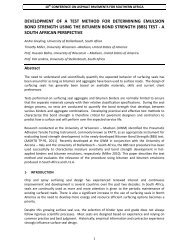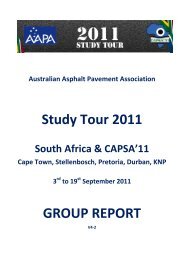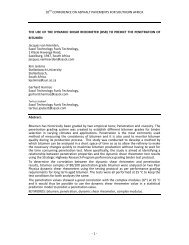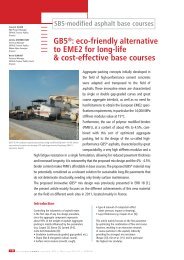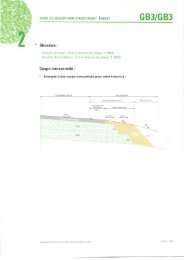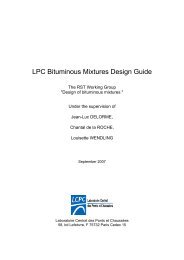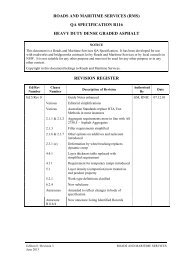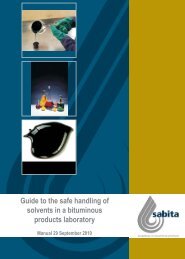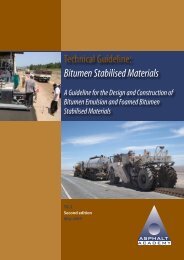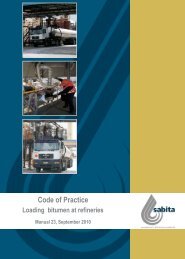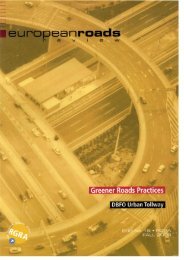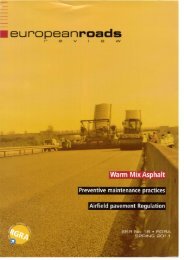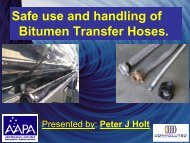Manual 31 Guidelines for calibrating a binder distributor ... - Aapaq.org
Manual 31 Guidelines for calibrating a binder distributor ... - Aapaq.org
Manual 31 Guidelines for calibrating a binder distributor ... - Aapaq.org
You also want an ePaper? Increase the reach of your titles
YUMPU automatically turns print PDFs into web optimized ePapers that Google loves.
A.7 Spray bar<br />
The spray bar is an important component of the <strong>distributor</strong>, as the<br />
required quantity of <strong>binder</strong> has to be sprayed through the spray<br />
nozzles in such a way that the <strong>binder</strong> is spread uni<strong>for</strong>mly on the road<br />
surface. The spray bar and related <strong>binder</strong> delivery pipe work is<br />
normally designed to minimise pressure loss over the length of the<br />
spray bar and hence ensure that an equal amount of <strong>binder</strong> is<br />
delivered through each of the nozzles.<br />
The spray bar is provided with a height adjustment mechanism so<br />
that its height can be set to deliver the exact desired spray fan<br />
overlap pattern. Normally this is the height where the third overlap of<br />
the spraying fans makes contact with the road surface. On the older<br />
<strong>distributor</strong>s the height of the spray bar can be adjusted mechanically<br />
at the bar where it is attached to the chassis. Modern vehicles<br />
normally have a hydraulic adjustment mechanism which may be<br />
operated either from the cab or at the spray bar.<br />
A.8 Nozzles<br />
To achieve good results the prescribed nozzles <strong>for</strong> the particular task<br />
must be used. For example, if nozzles are too large <strong>for</strong> the desired<br />
application, pulsation of the spray may occur. This results in uneven<br />
longitudinal spreading of the <strong>binder</strong>.<br />
Each <strong>distributor</strong> manufacturer has specific recommendations<br />
regarding spray nozzle type required <strong>for</strong> different applications. The<br />
typical nozzles that are used range from small nozzles used <strong>for</strong> less<br />
viscous materials such as prime coats and diluted emulsions, to<br />
nozzles <strong>for</strong> conventional and polymer modified <strong>binder</strong>s and large<br />
nozzles <strong>for</strong> more viscous modified <strong>binder</strong>s such as bitumen-rubber.<br />
Each type of nozzle has an optimum flow rate that will yield the<br />
required spray angle. In<strong>for</strong>mation to facilitate the selection of the<br />
appropriate nozzles should be provided by the supplier.<br />
Nozzles are to be cleaned regularly to ensure that they possess<br />
equal discharge capacities. In addition, the nozzle edges wear out<br />
over time and should be checked <strong>for</strong> wear and replaced when<br />
necessary.<br />
17



